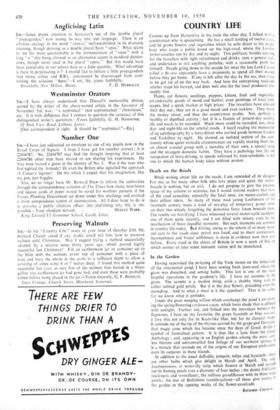In the Garden
Having supervised the re-laying Of the York stones on the hither-side of the ornamental pond, I have been sowing fresh lawn-seed where the grass was disturbed, and setting bulbs. This last is one of the most hopeful operations in the gardener's life. I have set aconites in the grass. The aconite is a modest thing, even a shabby thing with its rather rubbed gold petals.' But it is the first flower, preceding even the snowdrop. And to what a meal is it the appetiser! That is its value, for we know what it preludes.
Under the great weeping willow which overhangs the pond I am Plant- ing the spring-flowering cyclamen coum, which loves shade that is diffused with sunlight. Further out, and forked into the interstices between the flagstones, I have set My favourite, the grape hyacinth or blue nuiscuri- I love this not only for its Keats-like blue, but for its classical shape. It reminds me of the tip of the thyrsus carried by the grape-god Dionysus, that magic cone which has become since the days of Greek design a symbol of formalised pattern. It is thus like a lyric from the Greek Anthology ; and, appearing in an English garden among the more care- less blooms and untrammelled first foliage of our northern springs, it is a miracle that reminds me of the origins of our European civilisation, even its outposts in these islands. In addition to the usual daffodils, jonquils, tulips and hyacinths, there are other bulbs which give delight in March and April. The tulip kaufmanniana, or water-lily tulip, which flowers in March and spreads out its flaming petals'over a diameter of four inches ; the dainty fritillaries (tneleagris and verticillata); the trillium grandiflorum with its three waxY petals ; the star of Bethlehem (ornithogalum)—all these give variety to the garden in the opening weeks of the flower-cavalcade.


















































 Previous page
Previous page